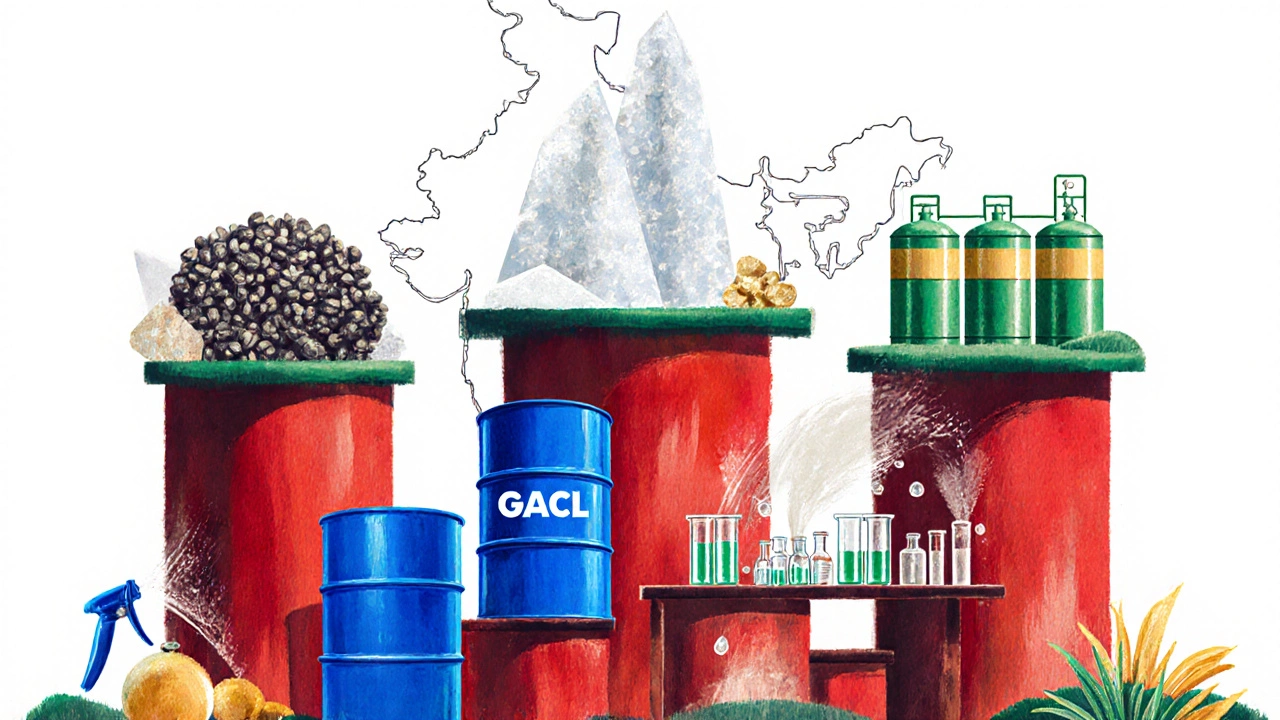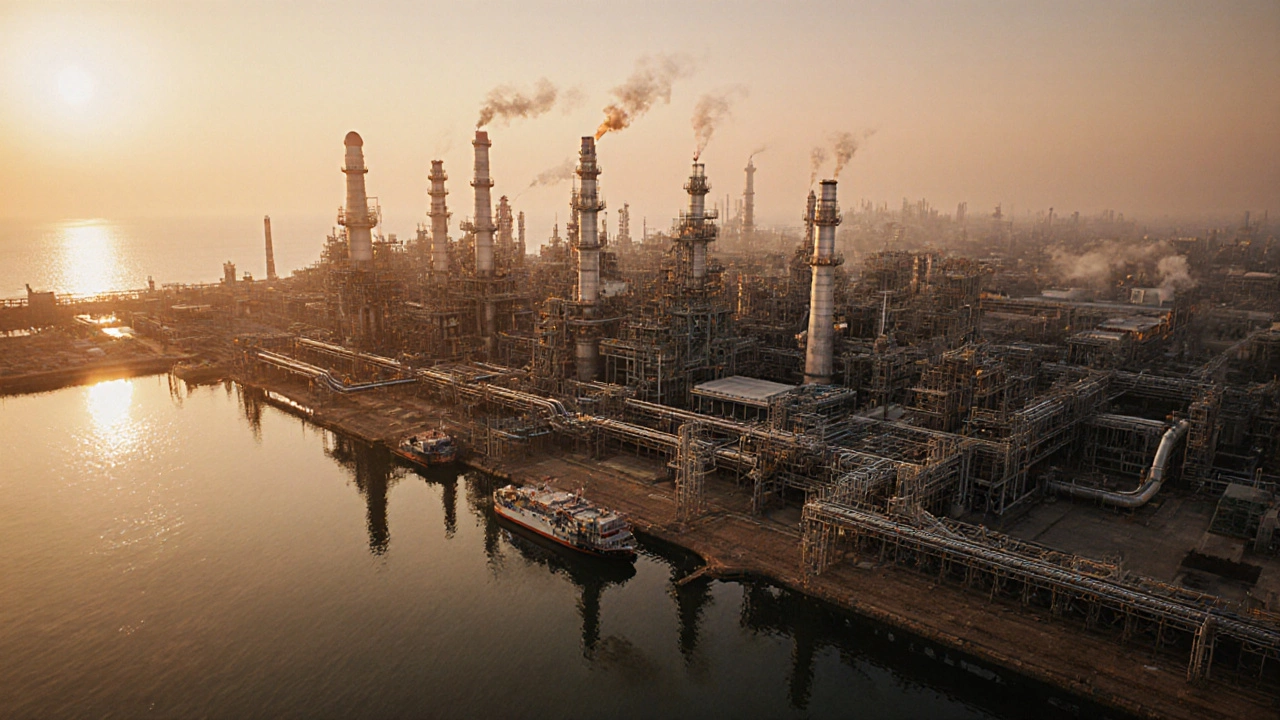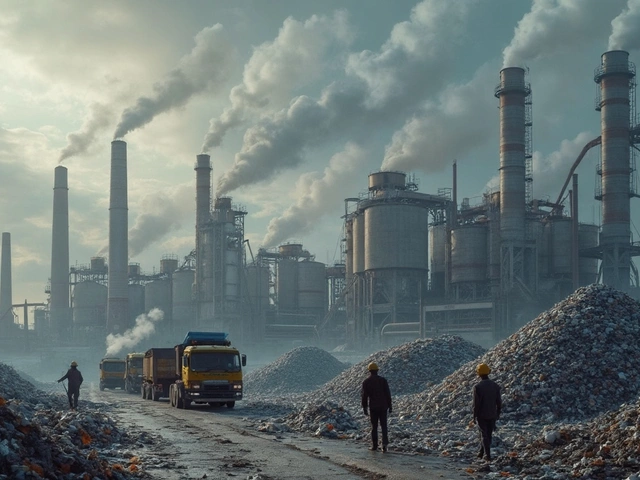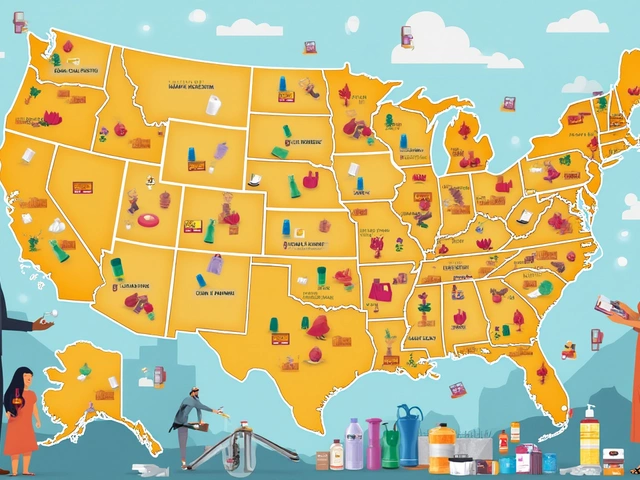Chemical Company Revenue Comparison Tool
Compare Revenue Against Industry Leaders
Indian chemical companies are the backbone of the nation’s industrial growth, supplying everything from fertilizers to specialty polymers. In 2025 the sector is driven by a handful of giants that dominate revenue, export volume, and innovation. Below we break down the five most influential players, what they produce, and why they matter for the broader economy.
Why these five stand out
Choosing the "top" firms isn’t just about size; it’s about market share, product diversity, and strategic importance. The five listed here lead in at least two of those dimensions, and together they account for roughly 45% of India’s total chemical output.
1. Reliance Industries Ltd. - Petrochemical powerhouse
Reliance’s Jamnagar complex is the world’s largest integrated refining‑petrochemical hub. Its product slate includes polymers (PE, PP), polyester, and specialty chemicals used in automotive and packaging sectors. In FY24 the chemical division posted a revenue of ₹1.9 trillion, a 12% YoY rise driven by higher global demand for plastic resins.
- Founded: 1966
- Key products: Polyethylene, polypropylene, polyester, petrochemicals
- Export share: 38% of chemical exports
2. Tata Chemicals Ltd. - Integrated salt and specialty chemicals leader
Tata Chemicals began as a salt producer but now offers soda ash, lithium carbonate, and a growing portfolio of high‑performance polymers. Its focus on sustainability-using renewable energy for soda ash production-has earned it several ESG accolades. FY24 revenue stood at ₹276 billion, with a 9% increase in specialty chemicals sales.
- Founded: 1939
- Key products: Soda ash, lithium carbonate, fertilizers, industrial polymers
- Global footprint: Operations in India, USA, Europe, and Africa
3. Gujarat Alkalies & Chemicals Ltd. (GACL) - Alkali and inorganic chemicals specialist
GACL supplies caustic soda, chlorine, and hydrogen peroxide to sectors ranging from textiles to water treatment. Its strategic location in Gujarat’s chemical belt ensures low logistics costs. FY24 saw a revenue jump to ₹114 billion, helped by a 15% rise in demand for water‑treatment chemicals.
- Founded: 1960
- Key products: Caustic soda, chlorine, hydrogen peroxide, bleaching salts
- Capacity: 2.7 million tonnes per year of alkali chemicals

4. UPL Ltd. - Agro‑chemical and specialty crop solutions champion
Formerly United Phosphorus Limited, UPL has transformed into a global agri‑science company. It offers crop protection chemicals, bio‑fertilizers, and digital agronomy tools. In FY24, UPL generated ₹203 billion, with a 20% growth in bio‑based product lines, reflecting the industry’s shift toward sustainable agriculture.
- Founded: 1969
- Key products: Herbicides, insecticides, bio‑fertilizers, seed treatments
- Global reach: Presence in over 130 countries
5. Aarti Industries Ltd. - Specialty chemicals for pharma and performance materials
Aarti Industries focuses on fine chemicals, including custom synthesis for pharmaceuticals, polymers, and specialty intermediates. Its R&D spend-over ₹8 billion in FY24-has generated a pipeline of green chemistry solutions. Revenue reached ₹257 billion, with a 13% rise in specialty chemical sales.
- Founded: 1984
- Key products: Fine chemicals, polymer additives, pharma intermediates
- Innovation: 12 new patents filed in 2024
Comparison at a glance
| Company | Core Segment | FY24 Revenue (₹ bn) | Founded | Global Presence |
|---|---|---|---|---|
| Reliance Industries Ltd. | Petrochemicals | 1,900 | 1966 | Worldwide (major hubs in Middle East, US) |
| Tata Chemicals Ltd. | Soda ash & specialty chemicals | 276 | 1939 | India, USA, Europe, Africa |
| Gujarat Alkalies & Chemicals Ltd. | Alkali & inorganic chemicals | 114 | 1960 | Primarily India, export‑focused |
| UPL Ltd. | Agricultural chemicals | 203 | 1969 | 130+ countries |
| Aarti Industries Ltd. | Specialty & fine chemicals | 257 | 1984 | Global R&D network |

How these firms shape India’s chemical landscape
Collectively, the five companies drive three major trends:
- Export growth: Over 40% of their combined output is shipped abroad, supporting the government’s goal of a $30 billion chemicals export target by 2030.
- Sustainability push: Reliance’s circular‑economy initiatives, Tata’s renewable‑energy‑powered soda ash, and UPL’s bio‑fertilizers illustrate a sector‑wide shift toward greener processes.
- Innovation acceleration: Aarti’s patent pipeline and GACL’s advanced water‑treatment chemicals demonstrate rising R&D intensity, essential for competing in high‑value specialty markets.
Key challenges to watch
Even the biggest players face headwinds:
- Raw material volatility: Crude oil price swings directly affect petrochemical margins.
- Regulatory landscape: Stricter emission norms demand costly upgrades, especially for alkali producers.
- Global competition: Chinese and Middle‑Eastern firms are expanding capacity, pressuring export prices.
Staying ahead will require continuous investment in technology, diversification into specialty segments, and alignment with government initiatives such as the Production‑Linked Incentive (PLI) scheme for specialty chemicals.
What to expect in the next five years
Market analysts project the Indian chemical market to reach $250 billion by 2030. The five leaders are likely to double their R&D spend, adopt more circular‑economy models, and expand into renewable‑based feedstocks. Watch for strategic partnerships with global firms, especially in high‑performance polymers and green agro‑chemicals.
Frequently Asked Questions
Which Indian chemical company has the largest global footprint?
Reliance Industries Ltd. leads with operations across the Middle East, the United States, and Europe, supported by its massive Jamnagar complex.
What are the main product categories of Tata Chemicals?
Tata Chemicals focuses on soda ash, lithium carbonate, fertilizers, and industrial polymers, serving both domestic and export markets.
How does UPL contribute to sustainable agriculture?
UPL offers bio‑fertilizers, low‑impact herbicides, and digital agronomy tools that help farmers reduce chemical usage while maintaining yields.
Why are alkali chemicals important for Indian industry?
Alkali chemicals such as caustic soda and chlorine are essential for textiles, paper, water treatment, and many downstream chemical processes.
What makes Aarti Industries a leader in specialty chemicals?
Its strong focus on fine‑chemical synthesis, high R&D investment, and a growing portfolio of pharma intermediates set it apart.





